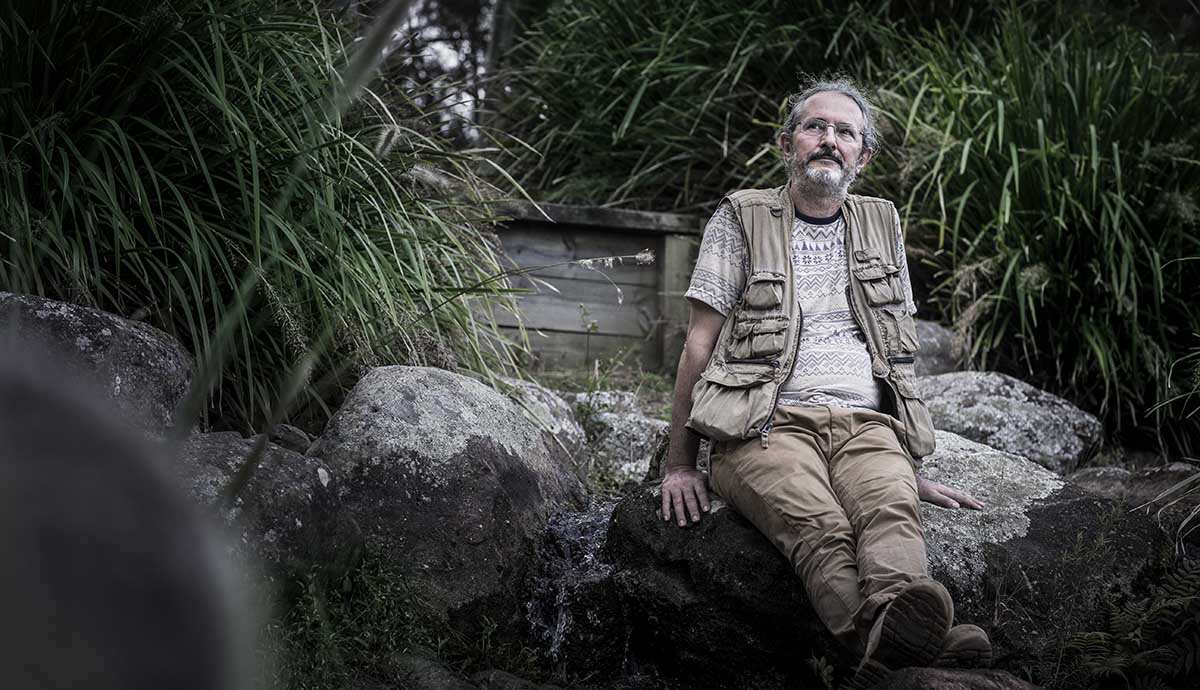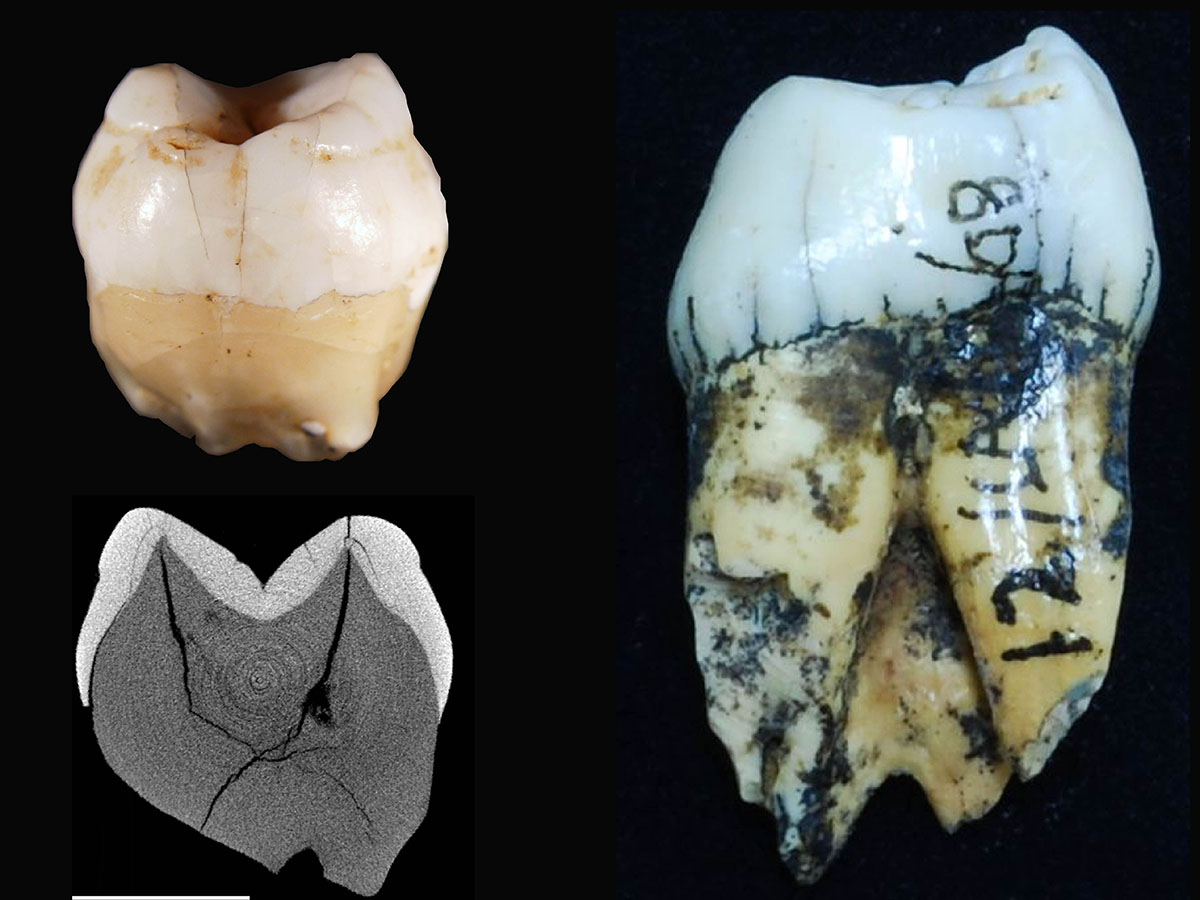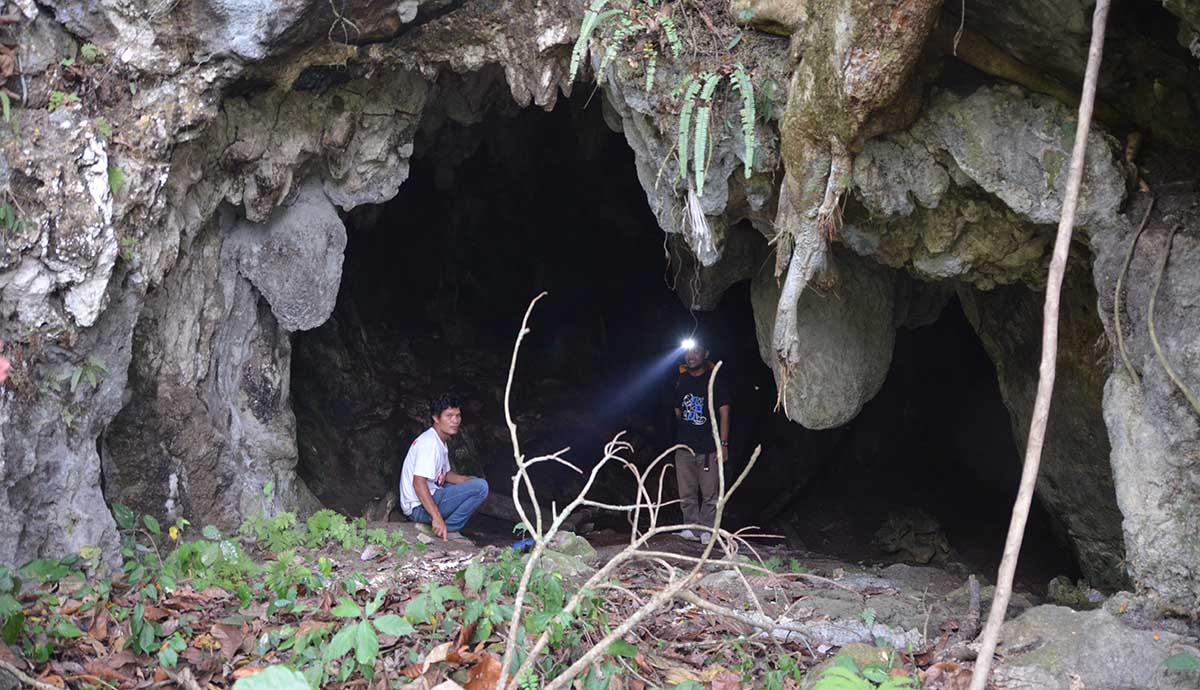August 10, 2017
Modern humans in Southeast Asia 20,000 years earlier than thought
Finding has major implications for theories on the spread of humans out of Africa
New dating of human teeth found in Indonesia 120 years ago suggests modern humans were in Southeast Asia 20,000 years earlier than previously thought.
An international team of researchers, led by Dr Kira Westaway from Macquarie University and including researchers from the University of Wollongong (UOW), used advanced techniques to identify and date the ancient teeth, which were found in the Lada Ajer cave site (pictured above. Photo by Julien Louys and Gilbert Price) in western Sumatra.
The results of their research are published in a paper titled “An early modern human presence in Sumatra 73,000 - 63,000 years ago” in this week’s edition of Nature.
The team’s findings have significant implications for the timing of the spread of humans out of Africa, the timing of their first arrival in Southeast Asia, and their first use of rainforests as a habitable environment.
Co-author Dr Gert van den Bergh, from UOW’s Centre for Archaeological Science, said that prior to these findings it was commonly thought that humans had inhabited rainforests only since about 10,000 years ago.
“The notion that modern humans were living in wet rainforest environments at such an early stage is perhaps the most important result of this study,” Dr van den Bergh said.
“It is difficult to survive in rainforests, there is not much food around. Most of the resources are up in the tree canopy so you have to be really clever to survive there.
“Previously, we knew that modern humans were adapted to Savannah environments, but not necessarily to other environments so theories of human dispersal out of Africa have been based on them moving through savannah landscapes or along the coasts.
“Now we have evidence that they were clearly entering rainforests by 60,000 to 70,000 years ago. It suggests they could adapt to a range of environments and were not reliant on savannahs to spread around the world.”

LIDA AJER REDISCOVERED
The cave was originally excavated in the late 1880s by Eugene Dubois, the Dutch palaeoanthropologist of “Java Man” fame, and revisited 100 years later by John de Vos and Randy Skelton.
Despite their claims for antiquity and the significance of the site, it has often been ignored in models of human dispersal out of Africa and through Southeast Asia due to problems of dating and tooth identification.
This study rediscovered the site more than 20 years later, with the intention of establishing a firm chronology for the evidence, and testing the modern human attribution of the teeth. The cave can now be reclassified as a key piece of evidence in the theories of modern human dispersal.
“The hardest part was trying to find the site again” lead author Dr Kira Westaway said.
“We only had a sketch of the cave and a rough map from a copy of Dubois’s original field notebook – we stumbled across the cave almost by accident – but the minute I saw a large calcite column in the entrance I knew we had found the cave dug by Dubois over 120 years earlier.”
The Lida Ajer human teeth were identified as modern human 70 years ago by Hooijer, a Dutch palaeontologist studying orangutan fossils, and while the study was convincing it lacked comparative studies of contemporaneous human fossils.
In the new study the human teeth were reanalysed using state-of-the-art imaging techniques, allowing insight into enamel thicknesses and junctions between the enamel and dentine, critical for distinguishing modern human from other primate teeth.
The analyses confirmed that the teeth are of anatomically modern humans.
“This cave has been shrouded in doubt since it was first excavated,” Dr Westaway said.
“We employed a range of dating techniques from different institutions to establish a robust chronology that would, after 120 years, finally put an end to the uncertainty associated with the age and significance of these teeth”
The dating techniques were applied to sediment around the fossils, to overlying and underlying rock deposits in the cave and to associated mammal teeth, indicating the deposit and fossils were laid down between 73,000 - 63,000 years ago.
Those dates mean that humans could have made the crossing to the Australian continent even earlier than the arrival date of the first Australians around 65,000 years ago. This oldest evidence for human presence in Australia to date was recently published in Nature by Clarkson et al., a study in which researchers from UOW were also involved.

BONE COLLECTING PORCUPINES
Dr van den Bergh said the teeth, along with animal bones found in the cave, appeared to have been taken there by porcupines - and may never have survived or been found otherwise as the limestone in the cave helped preserve them.
“Rainforest ecosystems are bad for bone preservation and so fossils are very rare,” Dr van den Bergh said.
“The Lida Ajer fossil assemblage contains isolated teeth, many of which show gnaw marks of porcupines at the roots. It is thanks to these bone collecting creatures that we have this rare glimpse of our past history.”
Dr van den Bergh’s former colleague at UOW’s Centre for Archaeological Science, the late Professor Mike Morwood - best known as the discoverer of Homo floresiensis (aka ‘the hobbit’) - is listed as a co-author on the paper. Although he died in 2013, Professor Morwood contributed to some of the early work on the project and established many of the contacts in Indonesia that made the project possible.
An early modern human presence in Sumatra 73,000–63,000 years ago by K. E. Westaway, J. Louys, R. Due Awe, M. J. Morwood, G. J. Price, J.-x. Zhao, M. Aubert, R. Joannes-Boyau, T. M. Smith, M. M. Skinner, T. Compton, R. M. Bailey, G. D. van den Bergh, J. de Vos, A. W. G. Pike, C. Stringer, E. W. Saptomo, Y. Rizal, J. Zaim, W. D. Santoso, A. Trihascaryo, L. Kinsley and B. Sulistyanto, is published in the 9 August 2017 edition of Nature (doi:10.1038/nature23452).
The research was supported by Australian Research Council grants, a Leaky Foundation grant, the Human Origins Research Fund, the Calleva Foundation, and additional funds from Macquarie University and Australian National University.
